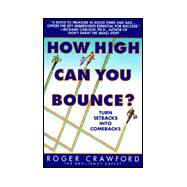
| Acknowledgments | p. ix |
| Introduction: Bounce or Break? | p. 1 |
| "Where Are You Coming From?" Your Attitudes | p. 11 |
| Believe Success Is Possible (Learn to Think Resiliently) | p. 15 |
| Flex Your Humor Muscles (Shrink Mountains into Molehills) | p. 37 |
| Bank on Your Past (Open a Resilience Account) | p. 57 |
| "How Long Have Your Been There?" Your Self-Image | p. 79 |
| Stay Hungry (Build Your Internal Wealth) | p. 85 |
| Use All Your Resources (Take a Personal Inventory) | p. 107 |
| Seize Responsibility (Pay Yourself First) | p. 133 |
| "Where Are You Going?" Your Motivations | p. 157 |
| Harness the Power of Purpose (Create an Action Plan) | p. 161 |
| Develop Your Inborn Leadership (Share Your Vision) | p. 189 |
| Embrace Challenges (Turn Your Barriers into Launching Pads) | p. 215 |
| Notes | p. 235 |
| About the Author | p. 241 |
| Table of Contents provided by Syndetics. All Rights Reserved. |
The New copy of this book will include any supplemental materials advertised. Please check the title of the book to determine if it should include any access cards, study guides, lab manuals, CDs, etc.
The Used, Rental and eBook copies of this book are not guaranteed to include any supplemental materials. Typically, only the book itself is included. This is true even if the title states it includes any access cards, study guides, lab manuals, CDs, etc.
Excerpted from How High Can You Bounce?: Turn Setbacks into Comebacks by Roger Crawford
All rights reserved by the original copyright owners. Excerpts are provided for display purposes only and may not be reproduced, reprinted or distributed without the written permission of the publisher.